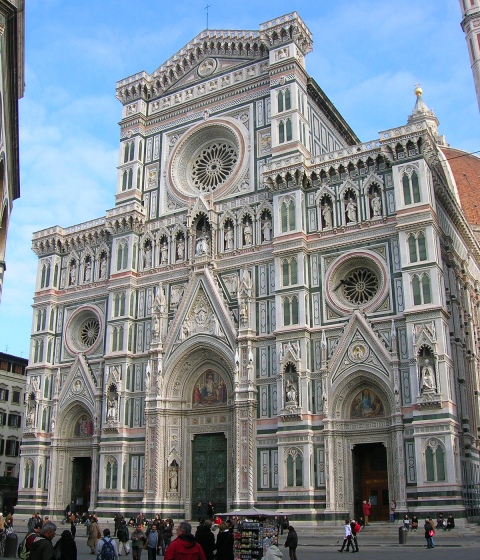Florence Hotel Giglio Florence Dome and Cathedral
The Cathedral of Florence, dedicated to Santa Maria del Fiore, was designed by Arnolfo di Cambio and is 153 meters long, 90 wide at the cruise and 90 meters high from the floor at the opening of the lantern.
It was dedicated in 1412 to Santa Maria del Fiore with an allusion to the lily, symbol of the city of Florence.
The Basilica of Santa Maria del Fiore was erected in place of the previous cathedral dedicated to Santa Reparata.
It took a long time to complete all of its parts. In fact, the diversity of style bears witness to the changes in taste that have taken place during the various periods of its construction.
The Cathedral of Florence was begun on September 8, 1296, on a project by Arnolfo di Cambio.
However, Arnolfo di Cambio could only work for a few years, finishing two bays and leaving the façade incomplete. At his death (1310) the work slowed down drastically.
In 1334 Giotto was appointed director of the work, but he could only deal with the construction of the bell tower because he died three years later. It was therefore the turn of Andrea Pisano, who worked until 1348, the year of the black plague that decimated the population of Florence.
Around half of its inhabitants died of plague.
Starting in the mid-13th century, the project was extended and taken over by Francesco Talenti.
The works continued alternately until the competition announced in 1367, following which the definitive model of the Basilica was proposed by four architects and four painters, among whom Andrea di Bonaiuto, Benci and Andrea di Cione, Taddeo Gaddi and Neri di Fioravante .
The Dome of the Cathedral was built by Filippo Brunelleschi who won the competition for his commission in 1418. Innovative and decisive was the method of construction without scaffolding that allowed the realization of the largest dome in the world of that time.
You can admire the Dome from inside climbing its 463 steps and admiring at the same time the frescoes of Giorgio Vasari.
The Basilica of Santa Maria del Fiore was completed in the nineteenth century, with the realization of the current facade, executed, following a competition, by Emilio De Fabris who between 1871 and 1884 managed to reproduce the Florentine style of the '300.


